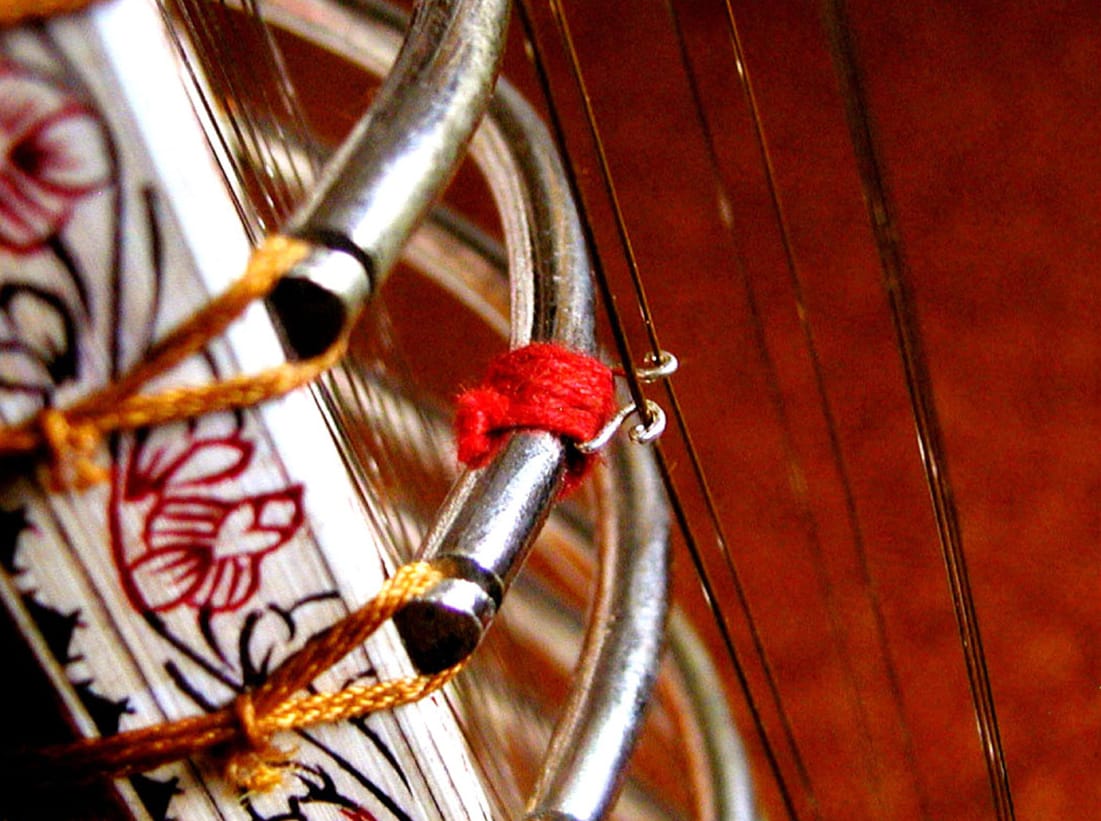How to Play Indian Sitar Raags on a Piano

Composer John Pitts explains the creative process behind the Indian raag compositions for piano solo in his new book “How to Play Indian Sitar Raags on a Piano”
So, please indulge me with this imaginary scenario:
1) A sitar player in India who also happens to love European classical music. He spends years exploring Bach’s 48 Preludes and Fugues – on the sitar. It is completely counterintuitive – but he makes it work, and loves it. Eventually he writes an instructional music book to open up the world of Bach to Indian sitarists.
2) The editor of a British magazine – for British lovers and performers of Indian classical raags/ragas – invites the Indian sitarist to write an article about playing ‘Bach on Sitar’.
It’s a touch surreal; and I guess this introduction may have done more harm than good. But one more step please: reverse everything, and that’s the story behind this article. Nikhil Sardana, Editor of Serenade, has kindly invited me – a British music teacher, composer, and pianist – to write about something close to my heart: the creative process of adapting and composing Indian raags for piano.
Back in the mid-1990s I spent a year in Pakistan, where I met some breath-taking musicians, and my love of Hindustani raags was born. I bought a sitar in a music bazaar in Lahore, and had a few lessons back in London with the inspirational sitarist Baluji Shrivastav. But over the years I have explored and composed raags mostly on my first instrument – the piano. In 2016 I published a 258-page book How to Play Indian Sitar Raags on a Piano – designed for anyone with a piano and an interest either in Indian classical music or in improvisation. Early 2018, I followed this with a much shorter book Indian Raags for Piano Made Easy for early pianists.
These books are a serious attempt to expand the historic raag tradition to a widely-played European instrument. To be clear, this isn’t ‘fusion’ – this is not a blending of two styles of music. I want to encourage much wider practical engagement in Indian classical music – in the soundworld, structure and emotional journey within raags. I want pianists to have access to Indian classical music and to experience its rich treasures by learning to perform it. Raags are incredibly rewarding to play. And they are a fascinating and compelling medium in which to compose and improvise.
The Obvious Problems
The immediate reaction – and objection – of many Indian classical music-lovers is to say that it is simply not possible to play raags on a piano; because the piano lacks a) the microtonal tuning of Indian shruti, and b) the ability to slide between notes. And those misgivings are reasonable: the inflections, the meend and gamak, slides and vibrato and other decorations, are an absolutely integral part of the language of raags. Indeed, many raags are defined in part by specific decorations of specific notes and the piano cannot replicate those vital ingredients.
But for me, as composer and pianist, it still begged these two questions:
1) on a piano – if you remove those important colours from a raag, is it left with nothing, or is it in fact still possible to find a massive wealth of musical riches to explore?
2) is it possible to compensate, at least in part, for their loss?
My books are the result of years of trying to answer these questions, and I am glad to report that the answer to both questions is categorically yes. I will try to outline some examples below. There were of course other difficulties to overcome – such as the fact that pianists in a western tradition learn almost entirely by playing from notated music, and improvisation is relatively uncommon. Western pianists are also not generally used to playing in a rhythmically free way: with very few exceptions western music has a fixed pulse, whereas one of the key characteristics of the alaap in a raag is its free pulse. Another barrier is that the piano’s timbre just does not sound Indian. Plus, many common raags use scales that you find in Western classical music too – which means that simply playing those notes on a piano does not immediately evoke the sound world of Indian raags.
How to capture raags on an instrument with fixed pitches
So, how did I go about capturing the soundworld, the emotional journey of a raag, the uniquely beautiful process of slowly unveiling and developing musical material that defines raags – on a piano?
My own starting point was composing raags using only scales that had a very immediately Indian feel to western ears – scales with for example a minor second (komal re), and intervals of minor thirds (either between notes re-Ga, or ga-Ma’, or dha-Ni). In fact, my initial experiments were composing raags that didn’t actually exist in Hindustani music – but that did capture a sound-world and structure that was distinctively very close to Indian music.
I quickly found that keeping the sustain pedal down on the piano, combined with an extended set of drone notes in the left hand, helped to add a richness in the resonating harmonics in the piano that bore a similarity to the sympathetic strings of a sitar. The typical drone notes of a tambura’s four or five strings were not really enough, because the tambura actually throws out a rich array of beautiful harmonics. So my left hand piano drones also contain carefully selected additional notes, chosen mostly from the scale being used, to help create the right atmosphere. And the opening scene is set with the aural signature of a sitar – the fast descending cascade of the sympathetic strings. This gesture immediately evokes the right atmosphere.
The next challenge was to find ways of capturing the journey of the alaap – and in a way that pianists used to reading music notation could quickly grasp. For classically trained western musicians, the concept of a pulseless improvisation starting on very few notes, is far removed from almost anything they are likely to have learned to play, and quite difficult to grasp how to get started with it. But I came at this subject with a composer’s eye and ear and heart and I found huge affinity with the very slow, gradual unveiling of small phrases and patterns: in some ways the alaap is like a micro-version of part of the compositional process in any musical style – gradually exploring small ideas from every angle, gradually expanding and developing, putting together ideas. In each raag in my book, I have used the pakad (the main musical phrases of a particular raag) as the basis for the alaap. But, I have expanded these out from the typical two or three or four phrases to perhaps twenty short phrases, so that pianists can gradually work their way through the phrases in an improvisational way, where each phrase organically grows out of the last. I designed the notation of the left hand drone notes in a way that means the pianist can learn the little patterns and then let the left hand play in an un-pulsed way while the pianist’s brain can concentrate on the right hand melody.
The gat sections presented their own challenges. With no tabla player, the pianist has to do three jobs – the melody, the drone notes, and keeping the rhythmic patterns of the tala – which would traditionally involve three performers. I had to find ways of keeping the structure and rhythmic emphases of each tala within the left hand, and include the additional colourful drone notes, but without being overly complex – as again the right hand melody requires the bulk of the pianist’s concentration.
It was in 2013 that I started what was supposed to be a short project: a 20-page book, with sheet music of four or five raags adapted for piano solo, including a couple of pages of instructions about how to approach improvising within the alaap and jhor sections, for pianists to begin to be able to explore this beautiful music for themselves. But, it grew and grew. When I finally published it in November 2016, it had reached 258 pages, with 50+ pages of explanation, musical adaptations of 24 raags ¬ (three for each of the eight prahars within the 24-hour cycle), including alaaps, gats in a wide range of talas, all sorts of layakari and chand rhythmic variations on the fixed compositions and countless musical examples of taan and the ever-captivating tihai to explore.
For further information, to read reviews, to listen, and to order copies, please go to www.pianoraag.com





